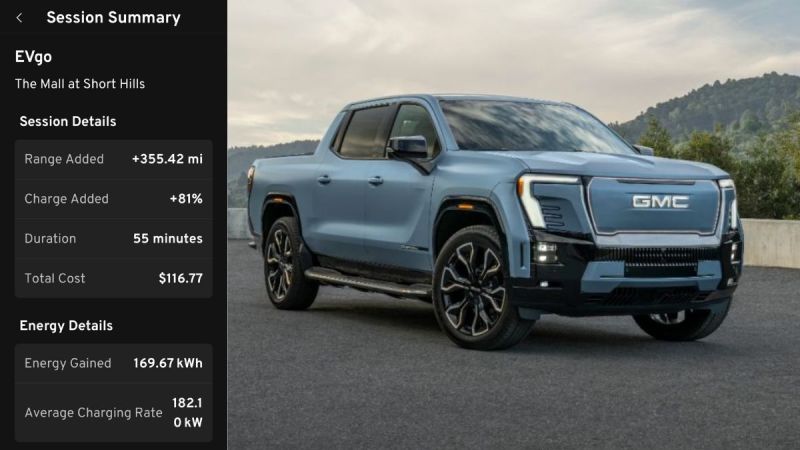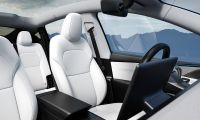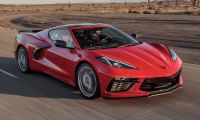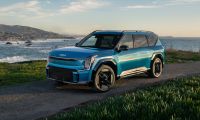There’s a moment, somewhere between the beep of a charger locking in, when you expect progress, silent power. Clean miles. Efficiency. But sometimes, you get a gut punch instead of a victory lap. One GMC Sierra EV owner, enthusiastic but green to the charging game, learned this the hard way, at a mall, no less. The Mall at Short Hills became the backdrop for a rookie mistake that ended with a jaw-dropping $116.77 receipt for a 55-minute charging session. You could almost hear the ghost of a gas pump chuckling from the past.
"Definitely not what I expected for my first full charge… this is absolutely insane… what am I doing wrong?? HELP!!!!!"
- Mervin Leonor, GMC Sierra EV Group on Facebook
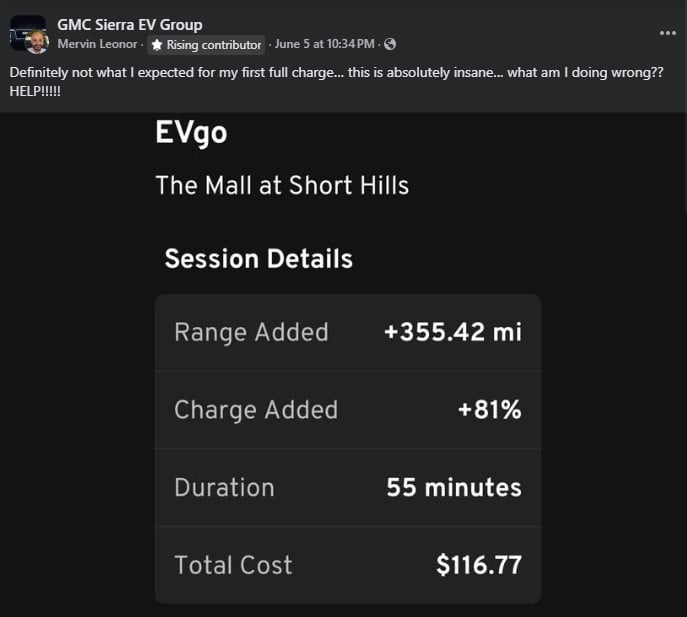
The numbers paint a clear picture: 169.67 kWh delivered, 355.42 miles of range added, an average charging rate of 182.10 kW, and a brutal cost of $116.77. It was the equivalent of ordering the porterhouse and getting the tab before the steak.
But Leonor didn’t rage or blame; he asked the right question: what went wrong? And the EV community responded with clarity, precision, and a bit of tough love. This wasn’t a takedown. It was a collective “we’ve been there” moment.
EVgo Fast Charging: Reliability, Outages & Network Upgrades
- Generally praised for reliability when it works, many users say it “just works” and is their go‑to fast charger, especially on road trips
- Other users report frequent breakdowns and payment glitches, describing EVgo as "slow" or "worthless" when stations are malfunctioning
- Complaints about poor customer support and billing errors (e.g., being charged $55 with no charge delivered), leading some to vow never to return
- The company is responding with hardware upgrades (EVgo ReNew) and expanded partnerships (GM, PlugShare) to improve network availability and reliability
Amir Bayani offered the first piece of practical wisdom,
“You need to pay attention to what the kWh cost is before charging.”
Public chargers fluctuate in cost depending on time of day, demand, and provider. DC fast chargers like EVgo often bill by the minute, not by the kilowatt-hour, which makes topping off from 80% to 100% not only slow but expensive.
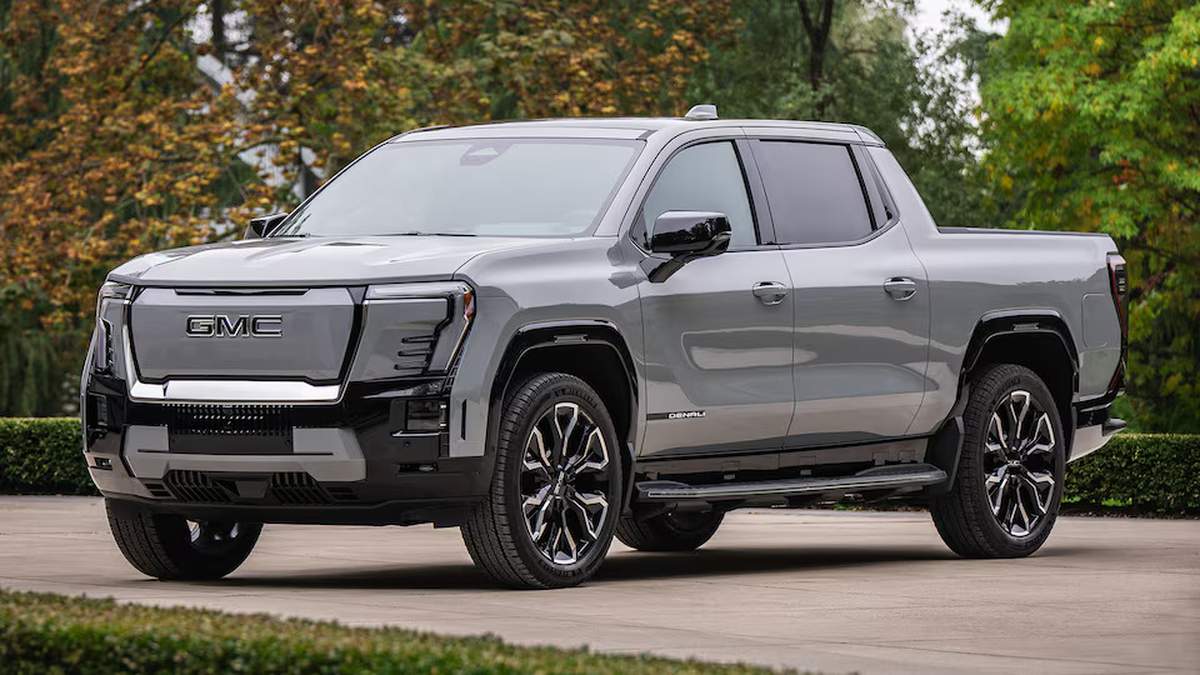
Leonor unknowingly pulled into a high-demand, high-cost situation and paid the price for it, literally.
Why You Should Cap Public EV Charging at 80%
"Don't charge to 100% on a public charger unless you absolutely need the range. 80% MAX unless you're on a road trip,"
Bobby Christoulakis cautioned, reiterating what many veteran EV owners consider words to live by. The physics of lithium-ion batteries slows the charge rate significantly in the final 20%. Chuck Nicholson added a critical nuance:
“It does take a bit as a newbie to understand that charging from 80–100 is rarely necessary.”
Charging that final chunk is like coaxing molasses through a straw, and you’re paying per minute while it drips in.
Home EV Charging vs. Public Fast Chargers: Cost Comparison
The real game-changer is home charging. Amanda Pryz recalled, “All the salespeople told me it would cost me around $20 max!!!!” Michael Griffin gently clarified: “Which is absolutely true, AT HOME.” Bayani doubled down, explaining how off-peak rates in some regions drop to “.02 cents per kilowatt.”

In that scenario, Mervin's 169.67 kWh charge would’ve cost less than $4. Same electrons. Vastly different economics. It's a reminder that the real EV value proposition lives in your garage, not in a parking lot next to a Neiman Marcus.
And then there's the solar angle. Bill Zuk shared,
“My electric bill used to be $350–400 every month… Now it’s $15. Charging two EVs and running central air.”
Bryan Klotz tried to counter the argument but was quickly corrected: “Spend $50k to save $50 a week,” but Zuk countered with data, six years to pay off the system, and now 25 years of free charging and cooling.
2025 GMC Sierra EV Specs: Range, Performance & Pricing
- Dual-motor AWD delivers up to 760 hp and 785 lb‑ft torque; 0–60 mph in about 4.2 s (range: 4.1–4.5 s); electronically limited top speed ~110 mph
- Max Range Denali gets up to 460 miles on a full charge; Extended Range trim offers around 390 miles
- Extended Range Denali starts around $89,990; Max Range Denali about $98,400 (with typical test pricing near $101,285 including options/freight)
- Crew Cab with a 5′‑11″ bed, total length ~233.2″, curb weight near 8,987 lb; towing capacity up to 10,500 lb
This was a costly initiation, but it turned into a masterclass in EV economics, courtesy of an online tribe. The lessons? Know your billing model. Avoid charging past 80% unless you're mid-journey. Charge at home whenever possible. Consider solar if the numbers make sense. And above all, lean into the community, the ones who’ve paid these kinds of dues and came out wiser.
The $116.77 invoice isn’t a failure of electrification. It’s a reminder that even the best tools need the right hands and the right context. As this electric frontier unfolds, it’s not about replacing the gas station experience. It’s about rewriting it entirely. In that, Mervin’s story is less a cautionary tale and more a roadmap. Because progress doesn’t always come cheap, but it always comes with lessons.
Image Sources: GMC Newsroom
Noah Washington is an automotive journalist based in Atlanta, Georgia. He enjoys covering the latest news in the automotive industry and conducting reviews on the latest cars. He has been in the automotive industry since 15 years old and has been featured in prominent automotive news sites. You can reach him on X and LinkedIn for tips and to follow his automotive coverage.


